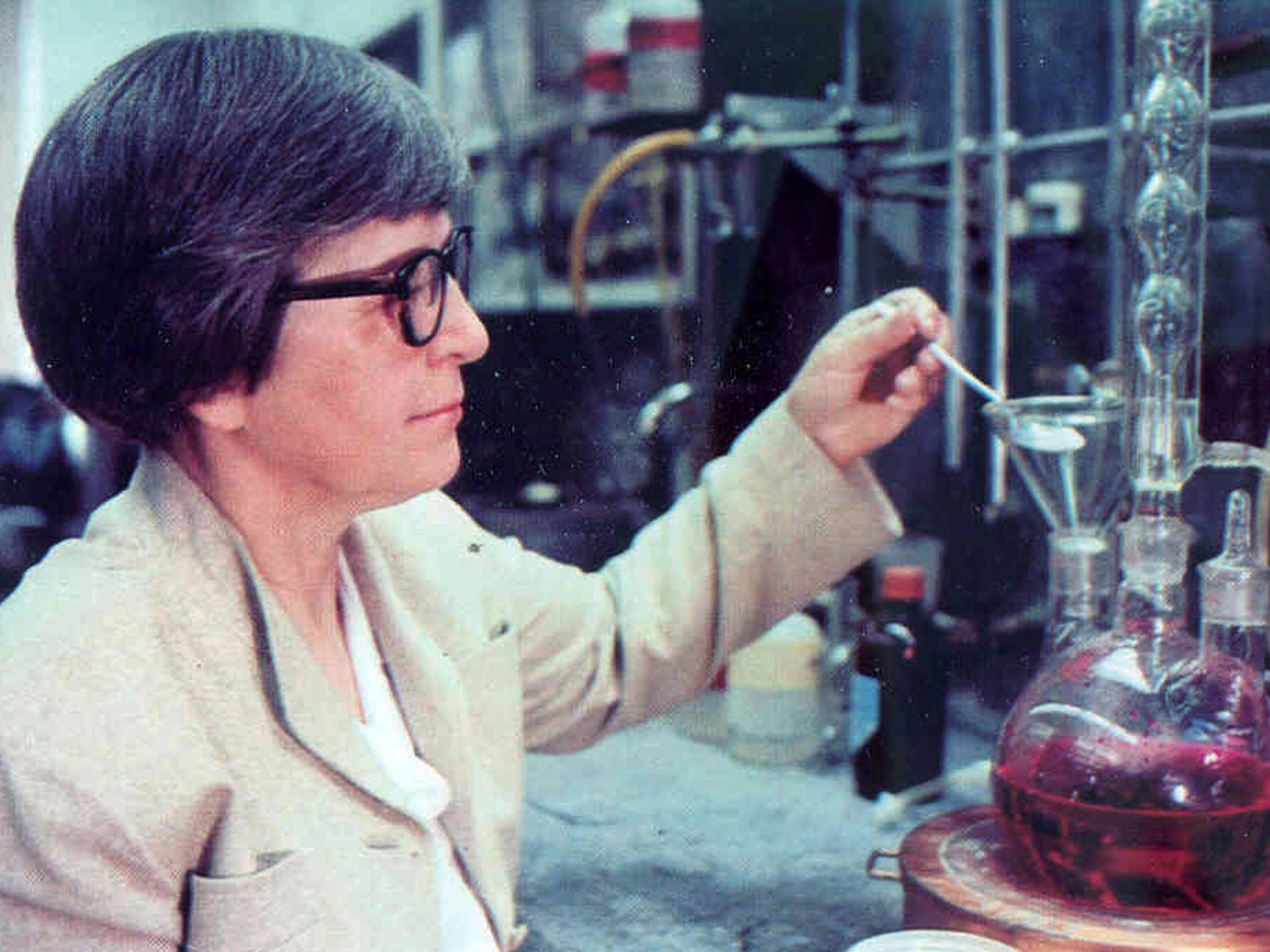Stephanie Kwolek: Chemist whose invention in the 1960s of the ultra-strong Kevlar polymer fibre has saved hundreds of lives

Stephanie Kwolek was a chemist who developed the ultra-strong Kevlar fibre used in bullet-resistant equipment, which has saved hundreds of lives. She described her innovation as "a case of serendipity." In the mid-1960s, halfway through her career as a chemist at DuPont, she was asked to develop a synthetic material that might offer a lighter, more fuel-efficient alternative to metal reinforcements in car tyres. She stumbled on a surprising compound, a liquid crystalline solution that could be transformed into astoundingly strong fibres. Of them, the best known became Kevlar.
Five times as strong as steel, it proved useful in a range of applications, such as boats, aeroplanes and sporting equipment. Woven into fabrics, it makes butcher's gloves and lumberjack gear more protective. Ropes produced with Kevlar are strong enough to hold hulking ships in place and are easy to handle. Most notably, it is used in the bullet- and stab-resistant vests and helmets.
"Not in a thousand years did I think the discovery of this liquid solution would save thousands of lives," Kwolek said in 2003 during the conflicts in Afghanistan and Iraq. "When I watch the war on TV, I take great pride in saying, 'We at DuPont invented that.'"
Kwolek encountered resistance during her research, in part because the polymer she created was so unusual. "Ordinarily, when you have a polymer solution of a flexible polymer chain, it sort of reminds you of molasses," she sid. "It may not be as thick but is generally of a transparent or translucent nature. With the polymer solution that I had, it was almost like water — and it was cloudy."
To make fibres, polymer solutions were processed through the pores of a tool called a spinneret. The machine operator noted the cloudiness of Kwolek's substance and concluded that it indicated the presence of solid particles, which would have clogged the equipment.
In fact, the liquid crystalline solution represented a state of matter between conventional liquids and solids, with some of the properties of each, and it could be safely processed through the machine. In subsequent testing, the fibres proved exceptionally strong.
She was born in 1923. Her father, who died when she was 10, introduced her to the natural sciences by taking her foraging in the woods. In 1946 she received a bachelor's degree in chemistry. Lacking funds for medical school, she worked at DuPont and developed an expertise in polymers.
She encountered challenges at a time when relatively few women worked in the sciences. "Although I've made many strides in my field, those were not enlightened times for the recognition and advancement of women in scientific research," she said. "While I was doing work that was acknowledged to be on an equal level to that done by men, it took 15 years for me to get my first promotion."
She retired from DuPont in 1986. She was inducted into the US National Inventors Hall of Fame in 1995. She sometimes met or received phone calls from people who had worn her bullet-resistant fibre. "Not long ago, I got to meet some troopers whose lives had been saved," she recalled. "They came with their wives, their children, their parents. It was a very moving occasion."
Stephanie Louise Kwolek, chemist: born New Kensington, Pennsylvania 31 July 1923; died Wilmington, Delaware 18 June 2014.
© The Washington Post
Subscribe to Independent Premium to bookmark this article
Want to bookmark your favourite articles and stories to read or reference later? Start your Independent Premium subscription today.

Join our commenting forum
Join thought-provoking conversations, follow other Independent readers and see their replies